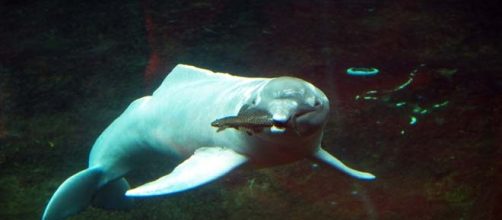A newly discovered fossil in Panama is showing scientists that river dolphins had a very interesting evolutionary path as they evolved from living in saltwater ecosystems to freshwater river environments.The fossil of the dolphin’s ancestor is thought to have lived more than six million years ago, and the remains consisted of a part of a skull, two flipper bones, conical teeth and jaw, and a right shoulder blade. They are thought to have similar genes and lived in the Miocene epoch.
Ancestor of river dolphins was marine inhabitant
The newly discovered river dolphin species was named Isthminia panamensis.
This exciting find was located in the Caribbean coastline of Panama and was definitely a marine animal, which is unlike its modern relatives. It was found near other marine fossils, which could explain some of the creatures it ate and where and how it hunted them.
Scientists at the Smithsonian National Museum of Natural History in Washington, DC, say that the shape of the skull, teeth and jaw conform it being a marine animal. It also showed that they were about nine feet long. However, they have also proven that despite it living in the ocean, it is definitely related to modern river dolphins and that they are its closest living relative.
Dolphins moved from salt to fresh environments
Today there are three species of dolphins that live in rivers, with one having recently been declared extinct, which is the Yantze dolphin.
When dolphins moved to freshwater environments, they evolved to have broader, more flexible flippers, as well as very long and narrow snouts to help them transverse the winding and more narrow and silty waters of the rivers they live in.
The fossils are said to be helping researchers learn about the marine ancestry of the dolphins living in freshwater and to also find out more about the geographic aspects of that time era. The fact that these dolphins went from salt to freshwater is considered to a backward evolutionary route compared to other marine animals. In most cases, all of the other known whales and dolphin species have gone from being land animals to ocean creatures, meaning that these dolphins had a very complicated evolutionary background.
The evidence has suggested that there were once many different kinds of these dolphins and they say the new fossil will help pinpoint the exact timeframe the dolphins went from being saltwater dwellers to being fresh water mammals.

